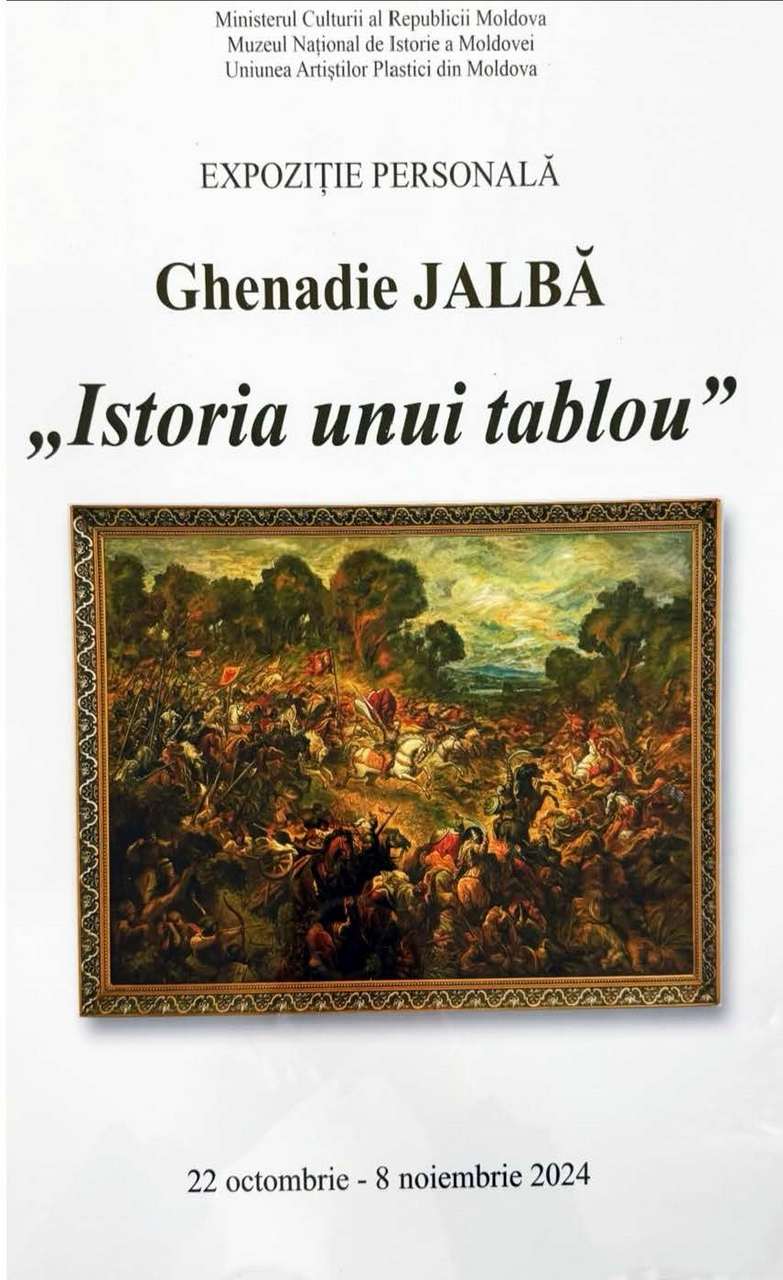 On October 22, 2024, at 3:00 PM, the National Museum of History of Moldova (MNIM) will host the opening of the solo exhibition "The History of a Painting" by renowned artist Ghenadie Jalbă. The event is organized in commemoration of the 520th anniversary of the passing of the great ruler Stephen the Great and Holy.
On October 22, 2024, at 3:00 PM, the National Museum of History of Moldova (MNIM) will host the opening of the solo exhibition "The History of a Painting" by renowned artist Ghenadie Jalbă. The event is organized in commemoration of the 520th anniversary of the passing of the great ruler Stephen the Great and Holy.
This exhibition offers a deep insight into the artist's creative process, featuring his central work, "Stephen the Great at Lipnic," alongside a series of sketches, preparatory drawings, and other graphic and painting works that illustrate the initial stages of creation. Visitors will have the chance to discover how a simple idea transforms into a masterpiece through a complex artistic process involving numerous adjustments and reconfigurations.
Within the exhibition, the public will be able to admire not only the final painting but also auxiliary works, such as portraits and compositions inspired by the same historical theme. These provide a broader perspective on Ghenadie Jalbă's artistic vision, reflecting his sensitivity to the history of Moldova and its emblematic figures.
Ghenadie Jalbă, a member of the Union of Plastic Artists of the Republic of Moldova, was born in 1950 and has an impressive career spanning over four decades in painting and graphics. His artistic education includes studies at the Painting School in Chișinău and the Institute of Fine Arts in Leningrad. Since 1987, Jalbă has been a member of the Union of Plastic Artists, distinguished for works that explore historical and cultural themes, showcased in numerous national and international exhibitions. Throughout his career, he has received prestigious awards, including the Order of "Civic Merit," and has participated in international artistic symposiums, solidifying his reputation in the art world.
Through this exhibition, the artist aims to pay tribute to Stephen the Great, a central figure in Moldovan history and identity, and to share with the public a glimpse into the behind-the-scenes of his creation process.
The public is invited to this opening to interact with the exhibited works and explore the artistic universe of Ghenadie Jalbă.
The exhibition will remain open until November 8, 2024, providing all interested individuals the opportunity to discover and admire the mastery of this exceptional artist.
 31 August 1989 St., 121 A, MD 2012, Chisinau, Republic of Moldova
31 August 1989 St., 121 A, MD 2012, Chisinau, Republic of Moldova
















































